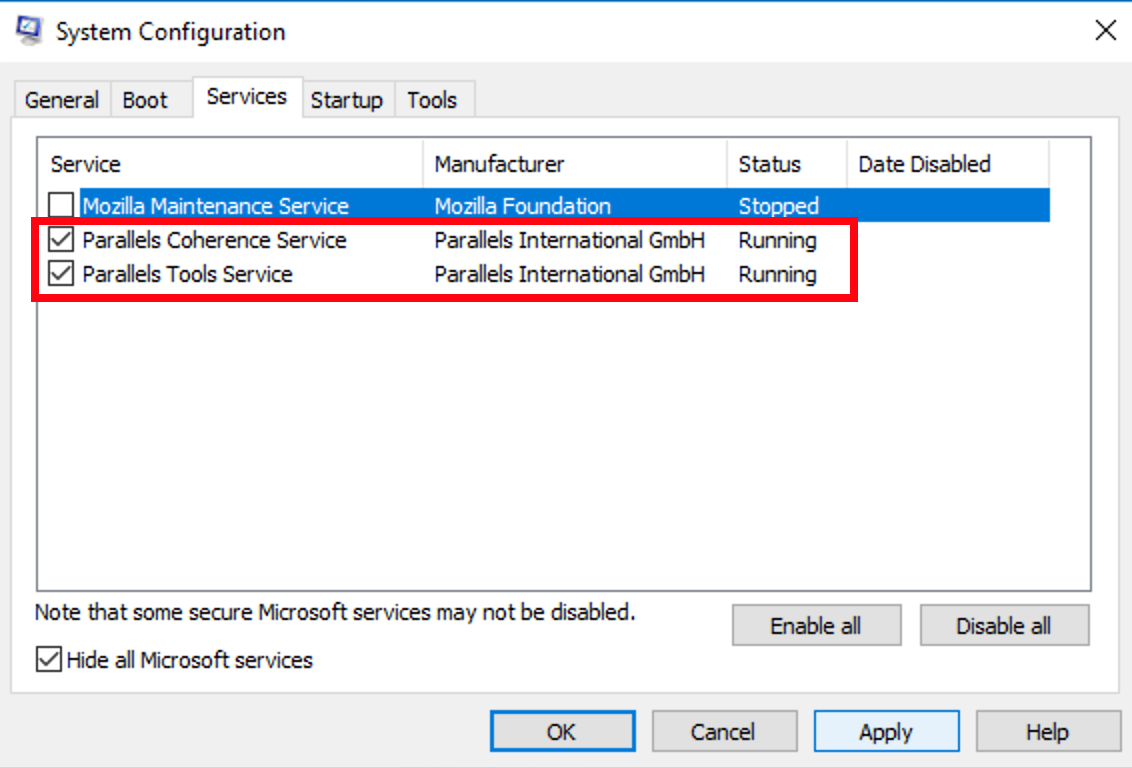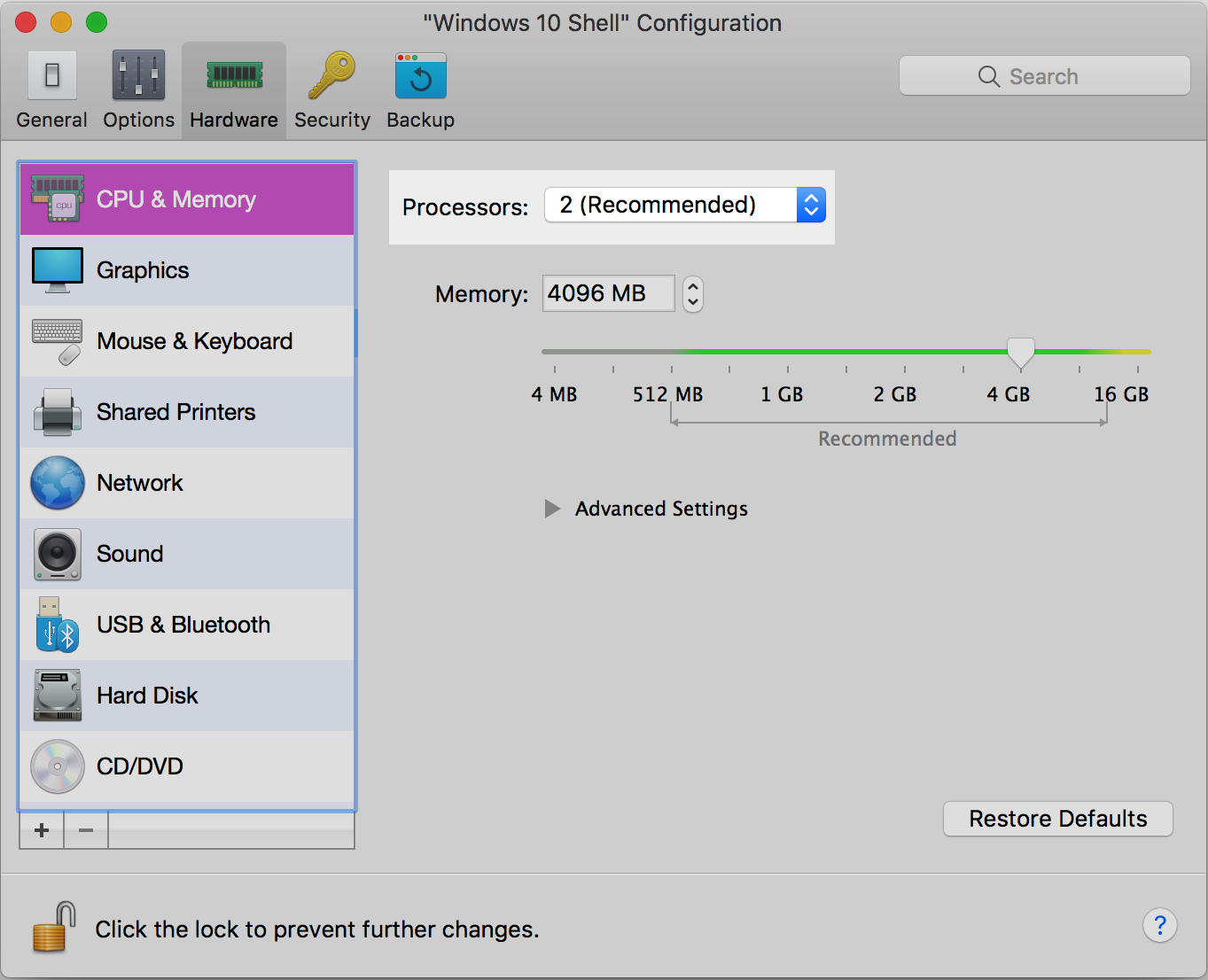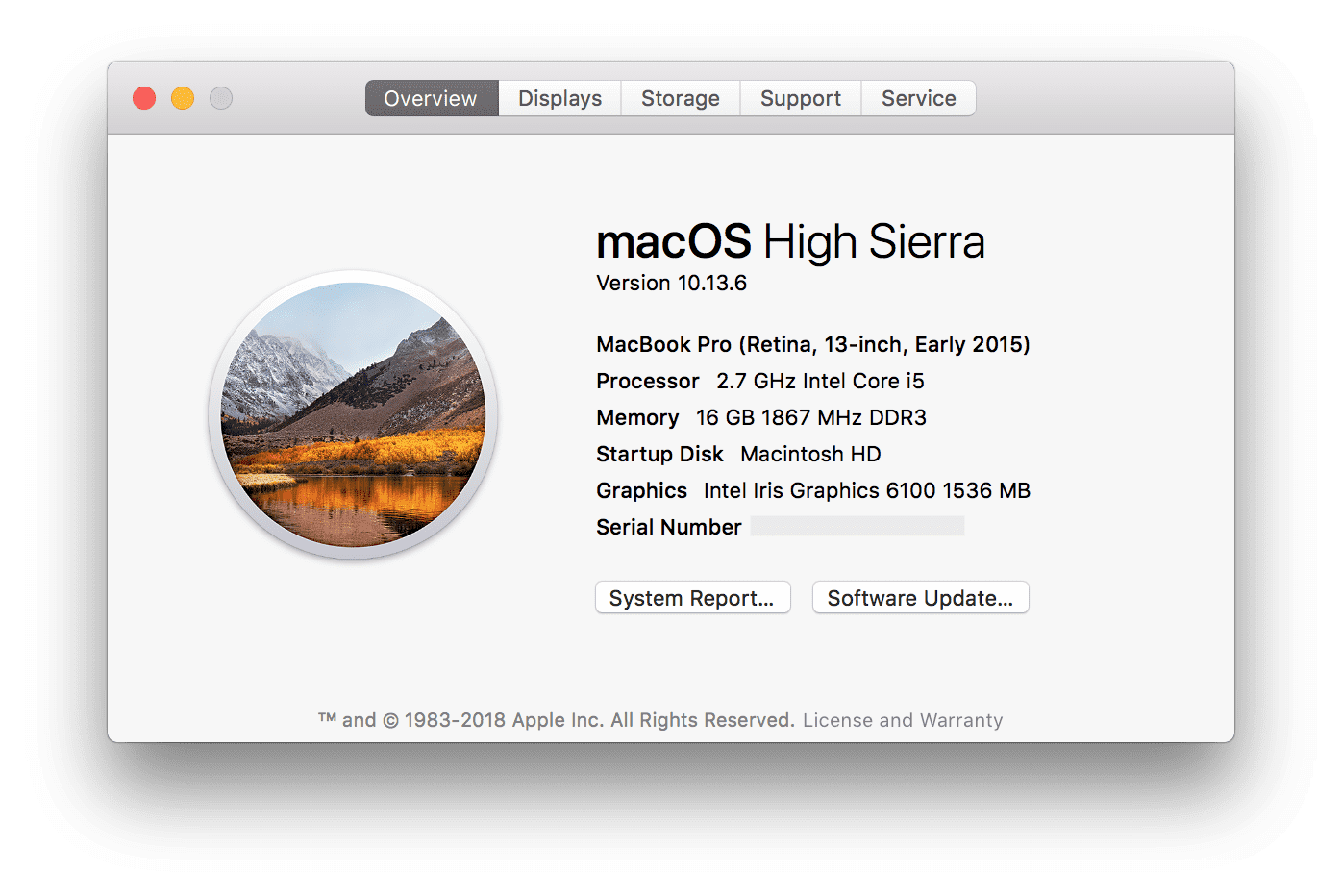Up to3%cash back canon u.s.a.,inc. Shall not be held liable for errors contained herein, or for lost profits, lost opportunities, consequential or incidental damages incurred as a result of acting on information, or the operation of any software, included in this software site. Canon mx490 series software mac.
Disable plug-ins: If the app that’s crashing includes any extensions, plug-ins, or other extras, try disabling or removing them to rule out the possibility that the add-on software is the culprit. Open Windows applications side by side with your macOS applications, without having to restart your Mac; Copy and paste text or drag and drop objects between Mac and Windows. Run Windows games and other 3D applications. Transfer all your data from a PC and use it on your Mac. Easily share files, devices, and other resources between Windows and Mac. Oct 29, 2013 Out of 8GB on Mac I gave 3 to windows 7 and both were up and running 5.5 hours on single battery charge. Just wanted to share my amazement from this solid OS and of course solid hardware. Sent from my iPhone 5s using iMore Forums mobile app. Parallels support says the following: 'The problem with Parallels & Cisco VPN on 10.4.8 is that Cisco VPN crashes if you do /System/Library/StartupItems/CiscoVPN/CiscoVPN restart This command will. When an app crashes on your Mac, it automatically generates a crash report. You’ll see this appear after the crash with a warning dialog saying “App has quit unexpectedly.” That crash report is available to read immediately in that window by clicking the “Report ” button. The crash report can also be found in the Console app.
As Mac OS X users, we have something to be happy about when it comes to app crashes and freezes: rarity. Typically you can work on your Mac for hours at a time without a single issue. However, a crashing app certainly can happen, leading to lost productivity, time and, worst of all, lost work. Fortunately, there are several steps you can take to recover from a crashed app, as well as prevent the issue in the first place.
How to fix a crashing app after the macOS upgrade
App crashes after the the macOS update is more than a common problem. Some apps freeze or malfunction, some won’t launch, some show no signs of life whatsoever. Why it happens? The most probable reason is that the app is simply not ready for the latest macOS Catalina. Something in its depth turned out to be incompatible with the new macOS.
Now, what can you do to fix an app crashing? Three things.

- First, see if you have the latest version of the app by clicking on its name it the top menu and choosing Check for updates.
- Second, visit developer’s website (or App Store page) and see if they’ve issued a statement about Catalina compatibility.
- Finally, some crashed apps on macOS Catalina can be fixed by running maintenance scripts. Download CleanMyMac X, launch it, find Maintenance tab and run the scripts.
What happens when an app craches: under the hood
Now let's go deeper into the nature of crashed apps, but first, let’s identify the difference between a crashed macOS app and a frozen one. While these terms are often used interchangeably, there is a notable difference.
Crash
A crash happens when a piece of software stops working altogether, and then closes on its own. In other words, the app quits when you did not tell it to. When this happens, you'll typically see a message noting that the application has 'unexpectedly quit” just as its windows disappears. It’s pretty frustrating — especially if you end up losing all your work.
Freeze
Hearthstone arena companion app. Download the Companion app from. Download the latest Companion versionDownload the Atlassian Companion app for or.WindowsThese instructions are for Windows 10. The process is similar in earlier, supported Windows versions.
A freeze is when software stops functioning, but continues to run. You can still see its windows, and its Dock icon still indicates that it’s running. However, no amount of clicking or tabbing around will do anything. A frozen app doesn’t quit like a crashed app does, it simply becomes unresponsive. Often no error messages accompany the freeze. Again, it’s a frustrating experience (if you want to know how to deal with it, check out this post on how to fix frozen apps).
To open Terminal on your Mac, do a spotlight search for the Terminal by pressing the Command + Space keys on your Mac keyboard and searching for Terminal in Spotlight Search. Click on the Apple icon in the top menu bar of your Mac and then click on Force Quit Application in the drop-down menu (See image below).2. Mac book pro lost my apps. To force quit one of these applications, simply click on the application from the list and click on the Force Quit button.Show Running Apps and Processes On Mac using the Terminal CommandThe Terminal also shows you a detailed view of which applications and processes are running on your Mac, along with the percentage of CPU used by each of these applications/processes.1. This will open the manager which will show you all running apps on your Mac3. To force quit an application or process through Activity Monitor, simply click on the application you would like to force quit and then click on the x button, located at the top left side of your screen (See image below)Show All Running Apps On Mac Using Force Quit Applications ManagerAnother method to check all the Running apps and programs on your Mac is through the Force Quit applications manager on Mac.1.
https://tryomg.netlify.app/best-restaurant-accounting-software-for-mac.html. The TSheets mobile app works with iPhone, iPad, and Android phones and tablets. Not all features are available on the mobile apps and mobile browser. Devices sold separately; data plan required.
When software freezes, you force it to quit, so that you can re-launch and hopefully get on with your work. With crashes, meanwhile, the problem is the app quitting on its own. In this article, I’ll discuss recovering from app crashes, as well as steps that help prevent them in the first place. Let’s get started.
What to do when a Mac OS X app crashes
The good news here is that a crashed app rarely brings down your entire Mac, as the trouble is restricted to that particular piece of software. That means we have a chance to recover. Let’s start with the simplest solutions.
First, just relaunch the app. When an app crashes, you’ll typically see a dialog box that says the software “unexpectedly quit” and you’ll have several options to deal with it, including “Relaunch”. Give that a click and cross your fingers that the crash doesn’t happen again. Oftentimes, you’re good from there. If not…
Try restarting your Mac. “Turn if off and back on again” is almost a punchline at this point, but it usually works. Shut down, restart and try again. Very often this simple task will set things right. If not, it’s time to try something just a little more involved.
Reinstall the app. Deleting the misbehaving app and grabbing a new copy gives you a fresh version to work with. That is, if you delete all of the app’s related files.
See, when you drag an app to the Trash, you aren’t deleting everything. Some leftover parts remain, and if the troublemaker is among them, your problem could persist. It’s a waste of time to delete an app via drag-and-drop, reinstall and then have it crash again. To make things right, you need to get rid of the app’s bits and pieces before you reinstall it, and this is where software like CleanMyMac X comes in handy.
An app that’s simply dragged to the Trash leaves behind a pile of associated files that you don’t see, like caches, preferences (often the culprit in crash-y apps), saved states, and more. You might not even know they’re there, but CleanMyMac X does. It’s smart enough to find the whole lot, safely remove them, and ensure that a newly installed app is just that: a complete fresh start.
In fact, you don’t even have to launch CleanMyMac X to thoroughly and safely delete an app. Simply right-click (or Control-click) the app’s icon and select “Uninstall with CleanMyMac” from Services in the resulting contextual menu. Easy!
Another wise move is to make sure there are no conflicts between the app and the Mac OS. When Apple pushes an update of its operating system to your Mac, that might interfere with your app’s performance, if the app or its add-ons are incompatible with this particular OS X version.
CleanMyMac can help you out here, too. Download it for free, go to its Uninstaller module and find the misbehaving app in the list. If you see a note that this app is incompatible with your system, it means you need to update the app, because your current version doesn’t work on the latest OS X.
How can you stay on top of aging apps? Apple makes it easy with software purchased through the Mac App Store. Simply launch the App Store app, go to the Updates tab, and you’ll see all available app updates. Find the one you need in the list, click the Update button, and you’ll get the latest version to your Mac. It’s a bit different with software acquired outside the App Store: you’ll have to visit the vendor’s website to see if there’s a new version available.
If nothing indicates that the troublemaker app is incompatible with your system, the problem could be with its add-ons or preferences. What you can do in this case is reset the app to its initial state. Again, go to the Uninstaller module in CleanMyMac X, select your app, and click Application Reset. CleanMyMac will make that app just the way it was when you first installed it.

What to do when an app crashes at launch
Parallels Causes Mac Freeze
So far I’ve addressed what to do when an app crashes as you’re using it. But what about the frustrating scenario of an app going down as soon as you launch it? No warning, no dialog box, just a bounce or two in the Dock and that’s it. In this case, it’s time to repair disk permissions.
What’s does fixing permissions actually mean? Think of your Mac’s hard drive as a tree with many branches. The top level of your drive is the tree’s trunk, and the branches represent information about files and folders. These branches, or “nodes,” store information like the location of data and permission rules, among other things. Normal computer use changes this information, and can lead to a conflict or other issue that generates crashes and the inability to use your system. This is what a permission fix addresses.
IPod Transfer for Mac. What do you need to know about free software? Copy, Sync and Share With ipod Transfer, you totally controls the media files on your device. Copy, sync and sharing. Free software ipod to mac transfer.
To repair disk permissions (for OS X prior to El Captian), go to the Utilities in your Mac’s Applications folder and launch Disk Utility. Next, click First Aid. It’ll ask for confirmation and get to work, comparing existing permission files with defaults to find any conflicts.
Or, if you want a slightly simpler way, you can fix the permissions with CleanMyMac X Maintenance Scripts. Just open the Maintenance tab, hit Choose Tasks and then Repair Disk Permissions. This helps resolve improper app behavior like crashing and keeps all of your disk’s files and folders in proper order. And that’s just one of the maintenance tasks available in CleanMyMac X, just try it.
A crashing app is no fun. Fortunately, a little understanding and proactive behavior can keep them to a minimum. CleanMyMac X makes it easy to do just that. Happy computing, and may your apps never crash again!
These might also interest you:
Parallels App Caused Mac Crash Download

About unexpected restarts
Rarely, your Mac might experience a software or hardware issue that requires it to restart. When it starts up again, you might see a message that your computer was restarted because of a problem.
Unexpected restarts are usually caused by software installed on your Mac, or by devices connected to your Mac. If the issue causes your Mac to restart every time it attempts to start up, your Mac might eventually shut down. Use the steps below to check the software and hardware on your Mac.
Check your software
If the issue is caused by software on your Mac, one of these steps might help:
- Install all available software updates.
- If your Mac suspects that a particular app caused the restart, it might ask whether you would like to move the app to the Trash. Click Move to Trash, then contact the software developer to see if a software update is available.
- Use safe mode to try to isolate the cause of the issue.
- Reinstall macOS. If the issue continues after reinstalling macOS, check your hardware.
Check your hardware
Learn how to check your connected devices and other hardware.
Check peripheral devices first
If you don't have any devices attached to your Mac, skip to the next section.
- Shut down your Mac.
- Disconnect all peripheral devices, such as hard drives or printers. If you have a desktop Mac, make sure that only a display, keyboard, and mouse or trackpad are connected.
- Turn on your Mac.
- Use your Mac for the amount of time that it would usually take for an unexpected restart to occur.
- If an unexpected restart occurs, follow the steps to check the internal RAM and third-party hardware.
- If an unexpected restart doesn't occur, turn off the Mac and connect one peripheral device at a time until an unexpected restart occurs.
Check RAM and third-party hardware
Certain models of Mac computers have removable memory (RAM). If you recently installed memory or a hard disk (or SSD), make sure that it's compatible and installed correctly. If possible, remove it and test with the original memory or disk.
Learn more
- If you continue to experience unexpected restarts, contact Apple Support.
- If your Mac is frequently restarting unexpectedly, it's important to determine the exact steps that lead up to the issue. The next time that your Mac restarts unexpectedly, record the date and time it occurs. These questions might help you diagnose the problem:
- Was the computer starting up, shutting down, or performing a particular task when the unexpected restart happened?
- Is the computer restart random, or does it happen every time you do a certain task?
- Does the restart happen when a specific external device is connected to your Mac or to a specific port?
- Learn what to do if your Mac doesn't turn on or start up.
- Learn about the screens you see when your Mac starts up.